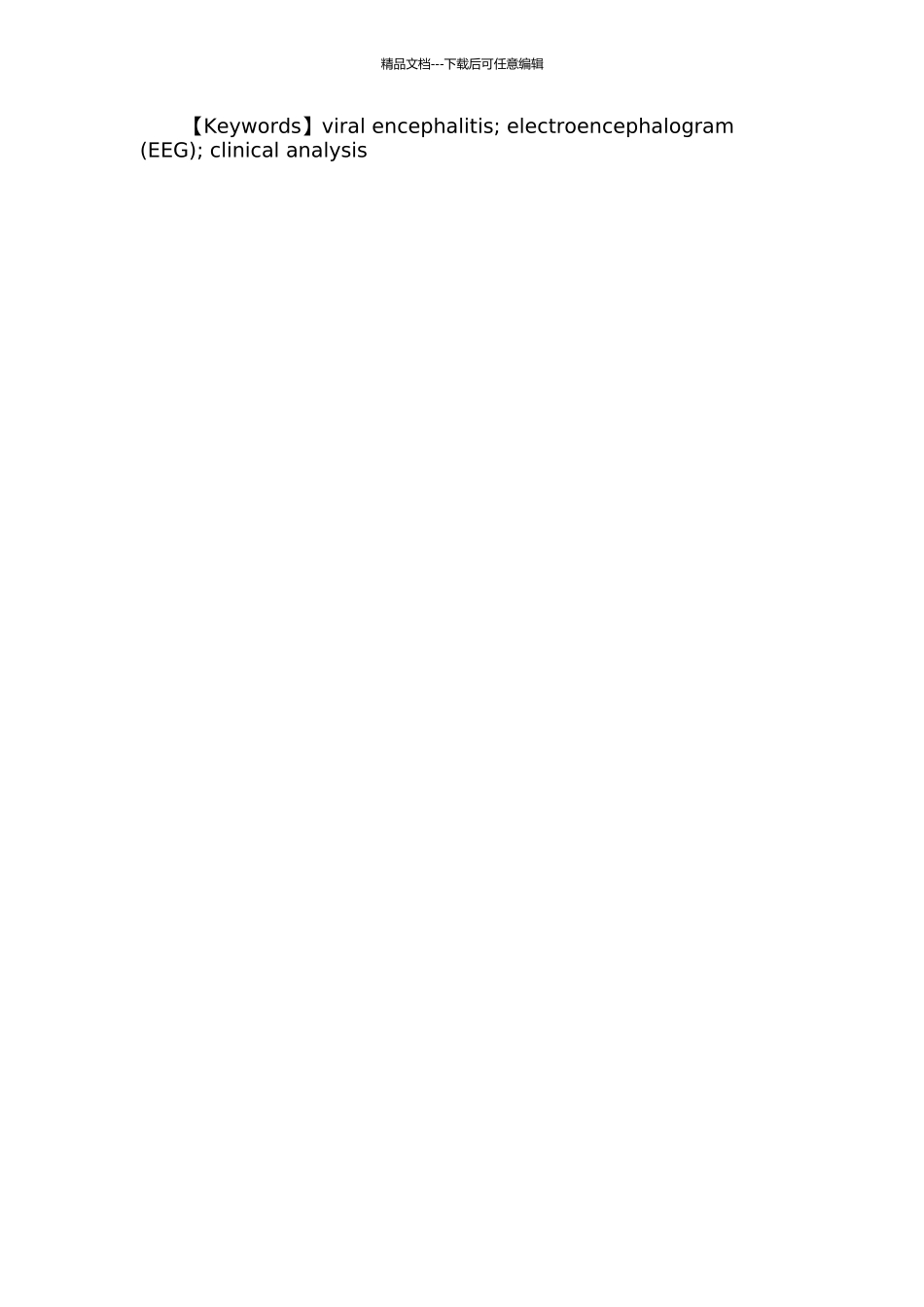精品文档---下载后可任意编辑46 例病毒性脑炎脑电图及临床分析的开题报告【摘要】目的:探讨病毒性脑炎的脑电图特点及临床表现,为其诊断和治疗提供参考。方法:选取 46 例确诊的病毒性脑炎患者,进行脑电图和临床分析,对病例中存在的脑电波形进行分类,并以此进行相关分析和对比。结果:本讨论发现,病毒性脑炎的脑电波形呈现为多样化的混合波,其中以高幅度慢波和多相波为主要特点。此外,临床表现则主要表现为头痛、发热、意识障碍等症状。结论:通过对 46 例病毒性脑炎的脑电图和临床分析,可以发现发病时期和病情严重程度与脑电图特点存在一定相关性。因此,脑电图在病毒性脑炎的诊断和病情监测中具有重要作用。【关键字】病毒性脑炎;脑电图;临床分析【Abstract】Objective: To explore the electroencephalogram (EEG) characteristics and clinical manifestations of viral encephalitis, in order to provide reference for its diagnosis and treatment.Methods: This study selected 46 patients with confirmed viral encephalitis for EEG and clinical analysis. The EEG waveforms of the cases were classified, and the relevant analysis and comparison were carried out based on the classification.Results: The results of this study showed that the EEG waveforms of viral encephalitis presented as various mixed waves, among which high-amplitude slow waves and multiphasic waves were the main characteristics. In addition, the clinical manifestations mainly included symptoms such as headaches, fever, and consciousness disorders.Conclusion: Through EEG and clinical analysis of 46 cases of viral encephalitis, it was found that there was a certain correlation between the onset period and the severity of the disease and the EEG characteristics. Therefore, EEG plays an important role in the diagnosis and monitoring of viral encephalitis.精品文档---下载后可任意编辑【Keywords】viral encephalitis; electroencephalogram (EEG); clinical analysis

